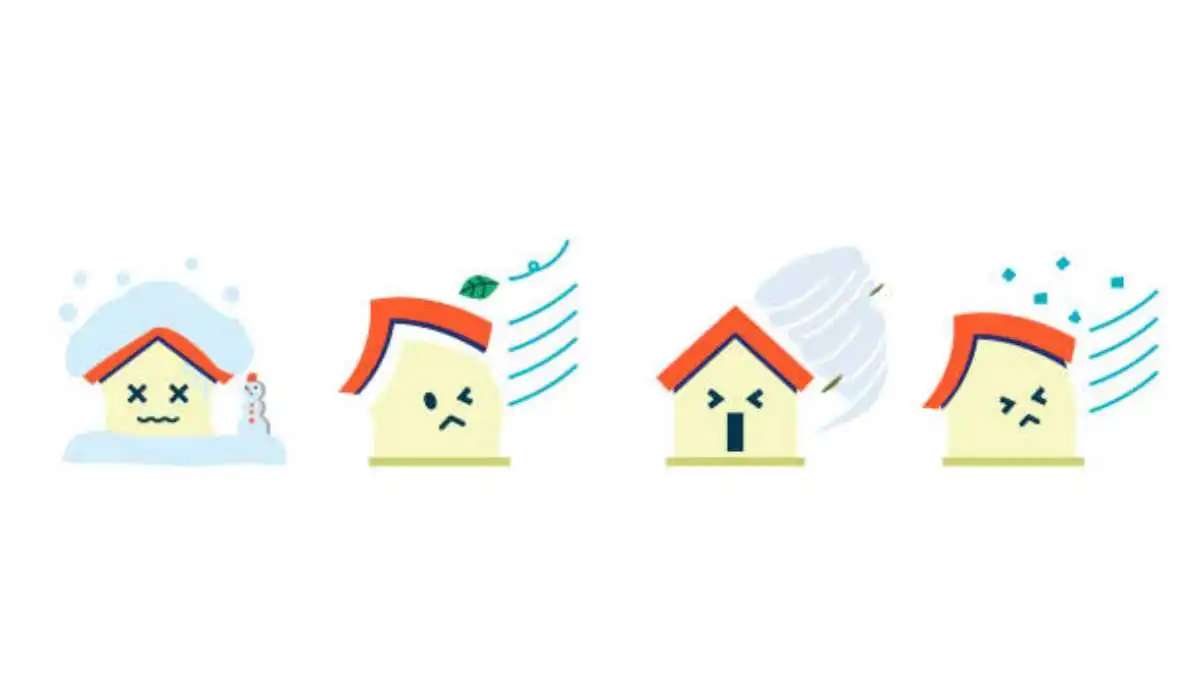HOME IMPROVEMENT
Water, Wind, and Wear: How the Elements Shape Your Roof’s Lifespan

Introduction
The roof doesn’t complain. It doesn’t creak when it’s tired, or groan when it’s overwhelmed. It just takes it—all the water, all the wind, all the weight. Until it doesn’t. And by then, the damage is usually done.
It starts subtly. Spring arrives with its false promises. The sun returns, trees bud, and things feel lighter. But what’s thawing out of winter’s grip isn’t just your driveway. It’s the roof—layers contracting and expanding, shedding ice, revealing what the cold months quietly strained. You might notice a curl at the edge of a shingle, or a streak down the siding. Maybe nothing at all, if you’re not looking closely.
Still, spring is deceptive. Water seeps where snow once sat. It tests flashing, finds nail holes, seeps past seals. That gentle rain might be the first test your roof fails—and you won’t know until you find a brown circle blooming on the ceiling.
Spring: The Season of Revealed Damage
Spring brings more than warmer temperatures. As roofs shed winter’s weight, problems that were hidden under snow and ice come to light. Subtle issues—like curling shingles or barely visible water stains—signal deeper vulnerabilities.
Preventative maintenance during this period is crucial. Routine inspections can identify cracked seals, misaligned gutters, or wet insulation long before they turn into costly repairs. Spring is a time to observe, detect, and act before summer amplifies the damage.
Summer: Silent Wear from Relentless Heat
As the days grow longer and temperatures rise, summer becomes the quiet enemy of your roof. Unlike storms or snow, heat doesn’t damage with a bang. It wears things down slowly, steadily.
Shingles soften under the sun’s UV rays and age prematurely. Metal roofs expand and contract daily, loosening fasteners and stressing seams. It’s a season where minor issues quietly grow—until they aren’t so minor.
This is the perfect time for proactive repairs. Blistering shingles or faded tiles may seem superficial, but addressing them early can extend your roof’s lifespan significantly.
Fall: When Debris Becomes Destructive
Fall brings a visual reminder of roof maintenance needs. Leaves clog gutters. Pine needles collect in roof valleys. Moisture finds resistance in clogged drainage systems, backing up and causing water to pool in places it shouldn’t.
This is your roof’s burden season. Overflowing gutters don’t just create an eyesore—they damage siding, erode soil, and stress the foundation. Regular gutter maintenance and seasonal roof inspections become essential tasks.
By pairing a professional inspection with a thorough cleaning, you protect both the roof and everything beneath it. A little attention now prevents bigger headaches later.
Winter: The True Test of Roof Durability
Winter is when roofs earn their keep. Snow doesn’t just sit; it weighs heavily. It melts during the day, freezes at night, and sneaks into small openings beneath shingles—forming ice dams that push water backward under the roof covering.
The damage often remains hidden until spring—soaked wood, stained ceilings, and moldy insulation become the clues left behind. Winter doesn’t just cause problems; it conceals them.
This is why preparation matters more than action in the cold months. Winter isn’t the time to fix problems—it’s the time to endure what you’ve already prepared for. Or suffer the consequences.
When Repairs Aren’t Enough
Over time, even the best-maintained roof reaches its limit. Not because of a dramatic storm, but because of the slow, constant pressure of all four seasons. When leaks return every year, when patch jobs pile up, and when energy bills climb without explanation, it may be time for a replacement.
That’s when many homeowners consider a more durable solution. Metal roofing, for example, stands up to snow, sheds water easily, and resists heat and UV damage. It doesn’t just look good—it performs better for longer.
Planning vs. Reacting: The Smart Homeowner’s Approach
A professional roofing company in Rockland County recognizes the patterns. Smart homeowners call before problems emerge—not in the wake of a storm, but in the calm before it. They’re not asking, “Is it leaking yet?” They’re asking, “Is it ready for what’s next?”
Preventative maintenance is more than peace of mind. It’s a strategy. One that shifts focus from crisis response to long-term resilience.
Final Thoughts: Built to Endure, Maintained to Last
The elements will always test your roof. Rain, wind, snow, and sun—each season has its challenges. But the real danger lies in the in-between moments. The quiet thaw. The gentle leak. The small gap that turns into a big problem.
When the next storm hits—whether it’s a downpour, a deep freeze, or a brutal heatwave—your roof shouldn’t just survive. It should stand strong, ready, and resilient.
Because a roof’s strength isn’t in how long it lasts untouched. It’s in how well it’s cared for—season after season.
-

 BIOGRAPHY7 months ago
BIOGRAPHY7 months agoBehind the Scenes with Sandra Orlow: An Exclusive Interview
-

 HOME1 year ago
HOME1 year agoDiscovering Insights: A Deep Dive into the //vital-mag.net blog
-

 HOME1 year ago
HOME1 year agoSifangds in Action: Real-Life Applications and Success Stories
-

 BIOGRAPHY1 year ago
BIOGRAPHY1 year agoThe Woman Behind the Comedian: Meet Andrew Santino Wife




























